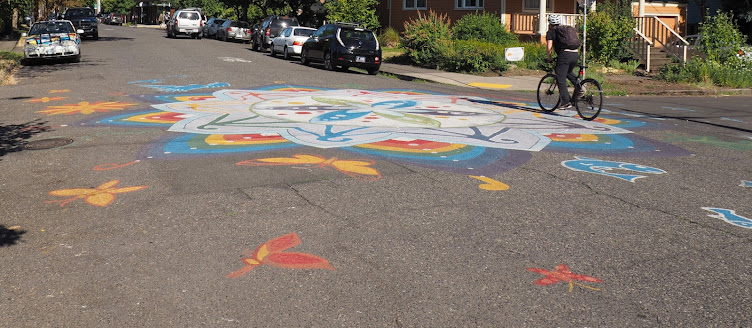To begin with, I am
interested in the relationship between bike infrastructure design and transit
ridership because I want to find out whether people will choose to ride transit
more if there is bike share available at transit stations, in order to
understand how well-built bike infrastructure at transit stations could affect
people's choice of travel mode. In my opinion, improving the
accessibility and proximity of transit stations is the key to reviving the
city’s transit service. The introduction of bike availability at transit
stations will promote people’s willingness to use transit services more and
serve as a last-mile solution for passengers.
After reading some relative
literature on the topic, I found one of the readings very interesting. It is
the study “Bike-and-Ride: Build It and They Will Come” by Robert Cervero,
Benjamin Caldwell, and Jesus Cuellar, from UC Berkeley. It is an article published
in 2013 in the Journal of Public Transportation (16 (4): 83-105). The
quantitative-research-designed study surveyed bicycle access trips to 42 BART (Bay
Area Rapid Transit) stations and these stations’ ridership data, including
stations with or without bike infrastructure such as bike racks, bike trail
access. Bay Area Rapid Transit (BART) is a heavy rail elevated and subway
public transportation system serving the San Francisco Bay Area in California.
BART serves 50 stations along six routes on 131 miles of rapid transit lines.
In conclusion, the article argues that bicycle plays a significant mobility
role in accessing rail stations, especially when safe, secure, and
well-designed bicycle infrastructure are present.
The study surveyed data
from BART in 1998 and 2008. There are some newly built stations in the system
which are built after 1998. These stations are excluded from the study. And the
study always uses a two-mile buffer from rail stations as the boundary of the study
area. The quasi-experiment study did pick some auto-dependent rail stations
where bike infrastructure isn’t available as a controlled group. The study also explained
a causal effect that “build it and they will come”, which means if safe,
secure, and well-designed bicycle infrastructure is built at a rail station,
more people will use bicycles as their mobility option for accessing the
station. There is a strong empirical association that more bike infrastructure
at rail stations will make the station looks more bike-friendly and it will
attract more people to ride to stations inside of walking or driving,
especially when such a well-designed infrastructure makes biking safe and secure.
The article argues that
bicycle infrastructure improvements at BART rail stations could increase the
use of both bicycles and rail ridership. The study has great social
importance because it promotes proactive partnerships between transit
agencies, local municipalities, and bicycle advocacy organizations to conduct
more bike infrastructure design and improve the local transportation system as
a whole. Meanwhile, another author Minjun Kim’s study “Analysis on bike-share
ridership for origin-destination pairs: Effects of public transit route characteristics
and land-use patterns” also shares a similar perspective that bike-share and
public transit could promote each other.
Currently, there are 16
BART stations that have bike share available at the station. The bike-share provider
in Bay Wheels, formerly known as the Ford Go Bike system. The
bikes are available for one-way trips, all-day rides, or annual membership. The bike-share system is also collaborating with Lyft so Lyft users could use the app on
their phones to use the bike share service as connecting travel mode from or to
the BART stations.
Given the great social
importance and scientific relevance it has, local transportation planning agencies
may want to conduct interviews on how people think about bike infrastructure,
its role at transit hubs, and whether it will affect their decision on travel
mode choice. Since Cervero’s research was done in 2013, urban landscape and
transit technology levels have significantly changed, as well as the social
environment. To add more contribution to Cervero’s research, I would
specifically recommend future policymakers take Covid’s effect on
people’s choice of travel mode into consideration. The effect of Covid on
public transit must be significant and it is urgent to understand what could be learned for future transportation planning.
Written By Yingjia Zhou
References:
1.
Bike-and-ride: build it and they
will come
R
Cervero, B Caldwell… - Journal of Public …, 2013 - scholarcommons.usf.edu
2.
Analysis on bike-share ridership
for origin-destination pairs: Effects of public transit route characteristics
and land-use patterns
M
Kim, GH Cho - Journal of Transport Geography, 2021 – Elsevier
3.
Your guide to bike share and BART
https://bartable.bart.gov/featured/your-guide-bike-share-and-bart
4.
Bay Area Rapid Transit
https://en.wikipedia.org/wiki/Bay_Area_Rapid_Transit

